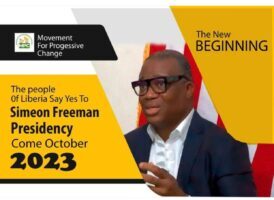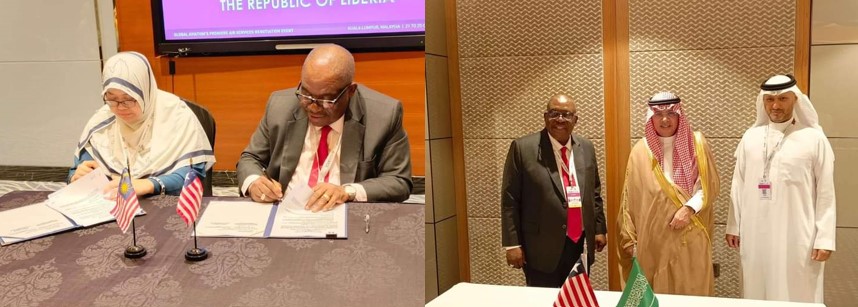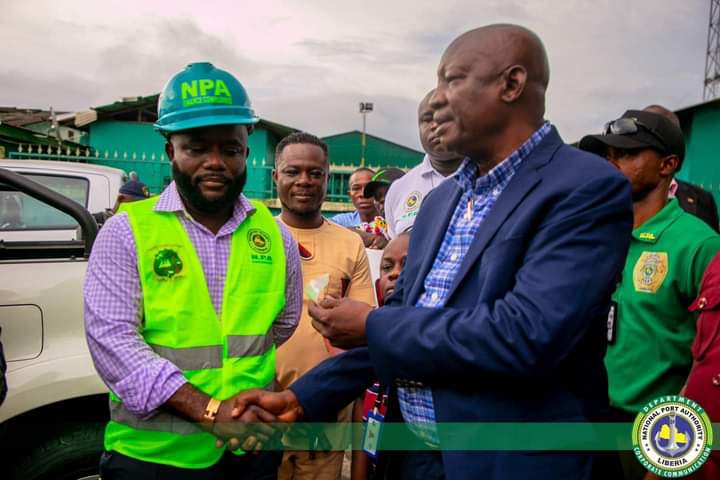By Othello B. Garblah
Despite its external debt standing at a staggering figure of 1097.23 USD Million in the second quarter of 2022 from 1061.90 USD Million in the first quarter of 2022, Liberia continues to progress under the International Monetary Fund program.
The progress under the IMF regime comes on the back of prevailing global economic challenges characterized by the lingering effects of COVID-19 and the ongoing conflict between Russia and Ukraine.
The country continues to enjoy macroeconomic stability, largely due to continuous policy advice and technical support from the IMF.
Liberia’s enrollment under the current IMF program was not without a rocky start though, but priorities set by the IFM mission team under the George Weah-led Coalition for Democratic Change (CDC) administration have continued to provide some form of macroeconomic stability for now.
In its fifth review of a four-year arrangement under the IMF Extended Credit Facility ECF), the IMF Mission noted that Liberia continues to enjoy macroeconomic stability, largely due to the continuous policy advice and technical support it continues to provide.
The fifth review which was held in Monrovia from October 31 to November 11, 2022, was led by mission chief Mr. Christoph Klingen with discussions surrounding the macroeconomic and financial situation of the country.
During the review process, the team also evaluated the program performance thus far, as against the end-September 2022 performance criteria and indicative targets as well as structural benchmarks.
However, during the review, IMF also set priorities for the future (in terms of policies and the economic growth outlook) after evaluating how government policies may affect growth, economic stability, and desirable stabilization adjustments in the short to medium term.
Key individuals with which the IMF Mission Team held consultations included Central Bank Executive Governor J. Aloysius Tarlue and Finance and Development Planning Minister Samuel D. Tweah, as well as development partners, private sector representatives and senior government officials.
Macroeconomic overview
The IMF observed that the Central Bank of Liberia’s (CBL’s) Research, Policy and Planning Department downwardly revised its economic growth projection for 2022 from its previous projection of 4.5 percent to an estimated 3.7 percent (in real terms) on the back of a slowdown in key primary and secondary economic sectors, mainly the mining sector.
However, it further noted that GDP in 2023 is expected to increase to 4.7 percent, as economic activity in agriculture & fisheries, forestry, mining & panning subsectors as well as manufacturing and services-related activities are expected to experience stronger growth.
“The authorities remain committed to fighting inflation and achieving the single-digit rate of inflation (at most 5 percent – which is in line with the ECOWAS threshold) in the medium term. In this regard, and as will be a testament in the upcoming 3rd Quarter Monetary Policy Meeting, the intention is to maintain the current contractionary monetary policy stance, while being mindful to strike a balance between price stability and the promotion of economic growth.” IMF Mission Team said.
It was quick to add though that the average inflation outlook for 2022 which was projected at 7.2 is expected to increase to 8.5 percent.
Meanwhile, the team explained that it is the view of the authorities that the path of inflation will depend largely on the stability of the domestic currency, economic diversification, increased domestic production of rice, public tax policies on key commodities (i.e., petroleum products and other consumables), increasing energy supply and accelerating infrastructural developments including farm to market roads.
Program performance so far
Under the program, IMF Mission team observed that Liberia has met all quantitative performance criteria (PC) except three.
The three according to the mission include the floor on the primary fiscal balance, (ii) the floor on international reserves of the CBL and (iii) the ceiling on CBL gross direct credit to government.
Liberia is also said to have missed two out of four structural benchmarks for end of September. These, IMF said include (i) submitting amendments of the Financial Institutions Act (FIA) of 1999 to the Legislature, and (ii) submitting the audit report for the FY2020/21 budget to the Legislature. Some progress has been made to implement the TSA and prepare the needed legislation to reduce large tax expenditures. The authorities are committed to following through on the missed structural benchmarks in November 2022, before Liberia goes to the Board.
Fiscal policy and PFM reforms
The Fund explained that deliberations between staff and authorities on fiscal policy matters concentrated on two areas, (i) the outturn for 2022 as at the end of September and (ii) updates on the 2023 budget preparation.
It was observed that the primary fiscal balance through September 2022 reflects a budget deficit that breaches the quantitative target set in the program for that month.
“The breach reflects an overall expenditure overrun in the order of around US$60 million. Conversely, the authorities have met the end-September indicative targets for revenues and on-budget investment of US$473 million and US$48 million, respectively.
They also met the PV target for new external loans. Thus, the higher deficit does not come from a revenue shortfall but rather from higher spending.
Preliminary evidence suggests that both investment spending and spending on goods and services are the major drivers of the expenditure overrun, with the latter taking the lion’s share. To strengthen public financial management, the authorities are committed to enhancing the capacity of the Internal Audit Agency (IAA) and ensuring greater coordination between the IAA and the budget office.” The Fund said
The Fund notes that Liberia plans to push ahead with reducing the budget deficit and has begun engaging spending entities and provided indicative ceilings. To be continued






